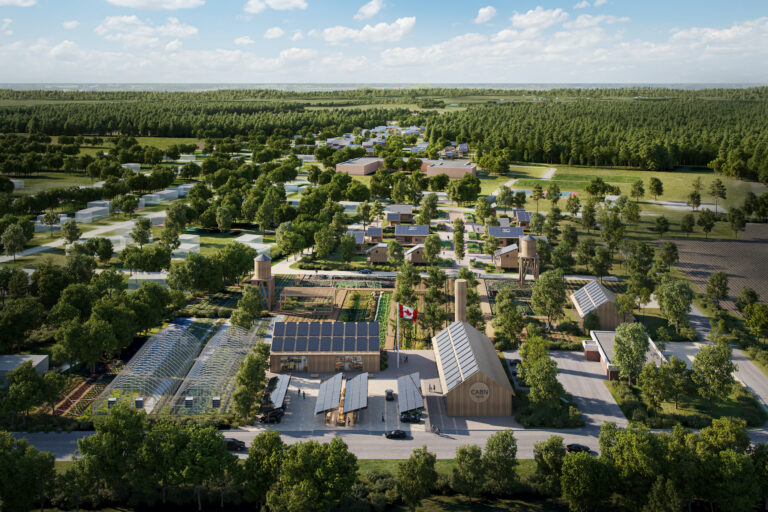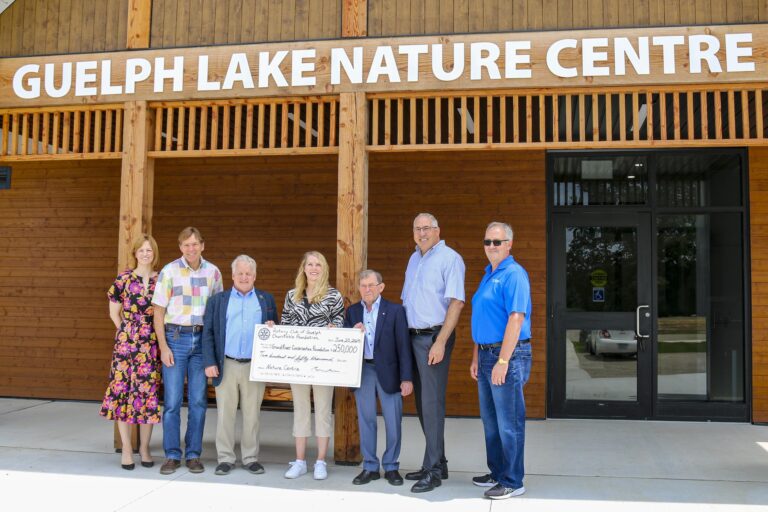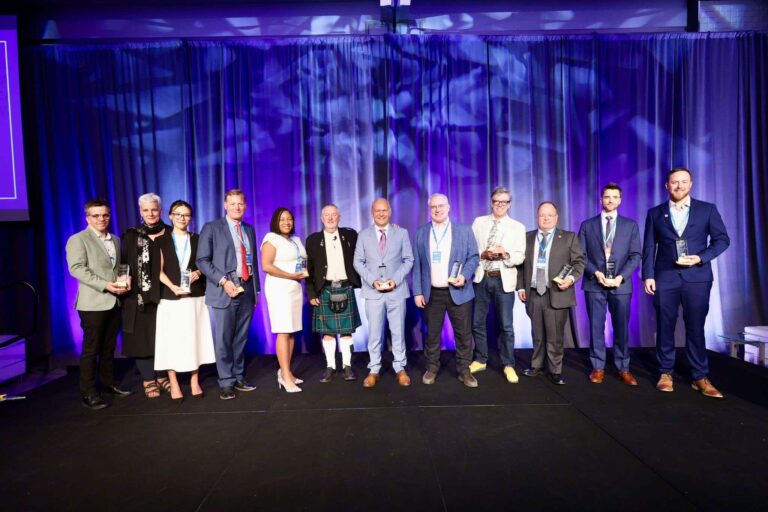Tuesday, July 1, 2025
Toronto City Council has approved a plan with multiple strategies that will be critical to achieving the City of Toronto’s TransformTO goal to reduce community-wide greenhouse gas (GHG) emissions to net zero by 2050 or sooner.
This plan includes: a Net Zero Existing Buildings Strategy to decarbonize all existing residential, commercial, and institutional buildings within the next 30 years; a Net Zero Carbon Plan to reduce emissions in City-owned buildings; and, an update to the Toronto Green Standard to achieve net zero emissions in new development by 2030.
Homes and buildings are the largest source of GHG emissions in Toronto today, accounting for 55 per cent of total emissions. Approximately 60 per cent of building emissions are attributed to residential buildings, including single-family homes, and 40 per cent to commercial and institutional buildings. Emissions stem from the use of fossil fuels and primarily natural gas to heat space and water.
“With temperature records shattered in Canada in recent weeks, it’s critical that we reduce community-wide emissions to net zero as soon as possible. While the challenges of transforming how we build, renovate and operate our homes and buildings are massive, so too will be the benefits in terms of our climate, our health, economy and resilience,” said Toronto Mayor John Tory. “We are committed to working with other orders of government to put in place the supports, standards, regulations and training required to enable this market transformation.”
The Net Zero Existing Buildings Strategy recommends nine key policy actions that the city can implement to enable and accelerate the uptake of retrofits by building owners, while maximizing potential co-benefits and minimizing potential harms to owners and tenants:
- Require annual emissions performance reporting and public disclosure from owners of all existing buildings
- Establish emissions performance targets
- Require energy and emissions audits and tune-ups
- Provide supports to reduce the complexity, costs and time associated with building retrofits
- Expand and enhance retrofit financing
- Streamline the permitting and approval processes for deep retrofits
- Build awareness and capacity of home and building owners to undertake emissions reduction measures
- Support workforce development and training
- Advocate and partner with other orders of government to ensure appropriate authorities and funding
“The suite of net-zero emission building policies just passed by the City of Toronto puts it on track for significant carbon reductions in the coming decades and is a model for municipalities across Canada,” said Ryan Zizzo, founder of Mantle Developments with locations in Toronto, Ontario and Vancouver, British Columbia. The firm is focused on net zero, climate-smart buildings and infrastructure development.
“Finally, the carbon footprint associated with operating buildings, including single-family homes, will be publicly reported and easily comparable using standardized energy labelling. Canadian municipalities are well past due to implement this relatively straightforward practice which has been commonplace in Europe and the UK for years.”
Transition and retrofit support
Toronto will implement voluntary performance measures and targets initially and intends to begin the tansition to mandatory requirements in 2025. Other jurisdictions, including Vancouver, New York City, St. Louis, Washington D.C. and Washington State have successfully transitioned performance targets from voluntary to mandatory compliance, to drive the required retrofits.
Retrofits can reduce emissions by more than 80 per cent in Toronto’s existing buildings; however, additional measures such as carbon offsets will be needed to reach net zero by 2050 in the sector.
The city is exploring potential changes that may be required from the Province of Ontario for implementation of the Strategy’s recommendations.
Current city programs and initiatives in place to support building and homes owners will also be leveraged and enhanced to support the transition to net zero in the building sector, including the Mayor’s Green Will Initiative, Energy Retrofit Loans, Navigation and Support Services, the High-Rise Retrofit Improvement Support Program, Home Energy Loan Program, and BetterHomesTO.
“We have 30 years to work together to transition our homes and buildings, and ensure a cleaner, greener, and more resilient future,” said Councillor Jennifer McKelvie (Scarborough-Rouge Park), Infrastructure and Environment Committee Chair. “Our bold strategy lays a foundation for a coordinated effort by all levels of government and the private sector that will create 18,100 jobs, reduce building emissions by 149 megatons of carbon and improve the health and resilience of our communities.”
Implementation of the Net Zero Existing Buildings Strategy is expected to increase local building retrofit economic activity by 87 per cent over the next 30 years, and nearly double annual investment in existing buildings. It is also expected to create an additional 7,000 direct, full-time jobs in local construction, energy services and supportive work over 30 years.
The Net Zero Existing Buildings Strategy was informed by detailed technical modelling, extensive stakeholder engagement, and a review of energy and emissions reduction policies and best practices in other jurisdictions.
City Council also adopted a plan to achieve net zero emissions at more than 2,500 City-owned facilities (approximately 9.5 million square meters). Implementation of the Net Zero Carbon Plan will reduce GHG emissions from City-owned buildings by at least 80 per cent by 2040.
Toronto green standard
The Toronto Green Standard (TGS) is a critical component of the City’s efforts to achieve zero emissions buildings by 2030 and meet 2050 city-wide GHG reduction targets. For more than 10 years, it has served as a market transformation tool both locally and provincially.
“The new version 4 of the Toronto Green Standard takes a giant leap forward by introducing requirements around the embodied carbon of new buildings. That means that the city’s development community will finally be required to understand, quantify, and reduce the carbon footprint of the materials they procure like concrete, which is responsible for roughly eight per cent of global emissions,” explains Zizzo.
Version 4 of the TGS advances requirements for building energy and GHG reduction and electric vehicle parking, and introduces tracking of embodied emissions in building materials used in construction. It addresses resilience through enhanced green infrastructure to manage stormwater runoff, reduce urban heat island impacts and promote biodiversity, including extensive and higher performance green roofs, bioswales, rain gardens, native pollinator species plantings and a new requirement for “green streets” (roads or streets that incorporate green infrastructure).
Version 4 will apply to new development applications beginning on May 1, 2022. Introduced in 2010, the TGS is updated approximately every four years.
The TGS has resulted in 169,000 tonnes of avoided carbon dioxide (CO2e) emissions annually, equivalent to removing more than 42,000 vehicles off the road each year. Cumulative avoided emissions total more than 5.43 metric tonnes of CO2e between 2010 and 2050.
For city-owned developments, Version 4 will require net zero emissions in 2022.
Next steps
An updated TransformTO Net Zero Strategy will be presented to Council later this year. The strategy will outline the pathway to reduce community-wide GHG emissions from key sources in Toronto, including buildings, transportation and waste. The strategy will focus on bold climate actions that need to be taken by 2030, to keep us on track to achieve net zero by 2050 or sooner. Community engagement is currently underway and residents can provide input on climate action priorities throughout the month of July.
For further information on the TransformTO plan, click here.
For further information about Toronto’s Net Zero Existing Buildings Strategy, click here.











